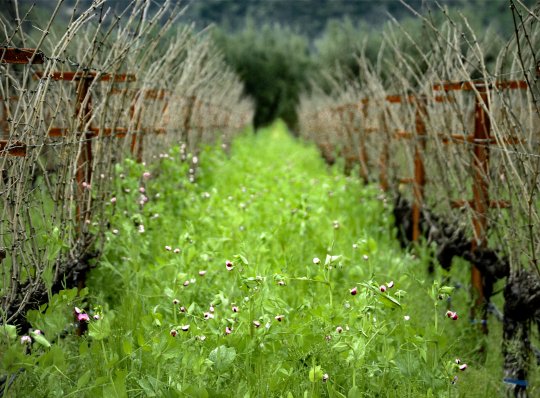Plant cover that is planted to compete with weeds and monitored throughout its developmment is called sown grass cover.
When choosing a species suited to the agronomic potential of a plot, water and nitrogen needs must be taken into account.
Different species compete with the vine for nutrients to a lesser or greater extent, so it is essential to understand their competitive potential to avoid stressing the vines. Other criteria should be taken into account, such as the species' establishment, its durability, its ability to control weeds, its climate suitability (resistance to drought), its ability to take root as well as its growth type (climbing, low growing).
| Common name | Implantation | Perenniality | Weed management | Potential for competition |
|---|---|---|---|---|
| Subterranean clover | Good but rather slow | Unreliable, 2 to 4 years | Average | Poor |
| Downy brome | Good but rather slow | 2 years | Good | Poor |
| Plantain lancéolé or Ribwort plantain | Very good | Good (≥3years) | Good | Average |
| Creeping red fescue | Average | Good (≥3years) | Good | Average/high |
| Orchard grass | Average | Good (≥3years) | Good | High |
| Tall fescue | Slow | Good (≥3years) | Good | Very high |
Sowing a mixture of species and varieties can be beneficial. For example, a grass can be associated with one or more leguminous plants. Their combination can be beneficial for biodiversity in the plot. When two species do not have the same implantation, perenniality or rooting characteristics, their combination can be beneficial for the vineyard. For example, when a climbing plant is planted with wheat, it grows on the wheat itself. Rough-stalked meadow grass can be combined with underground clover. Since meadow grass is slow to develop, the clover takes over at first before giving way to the meadow grass.


